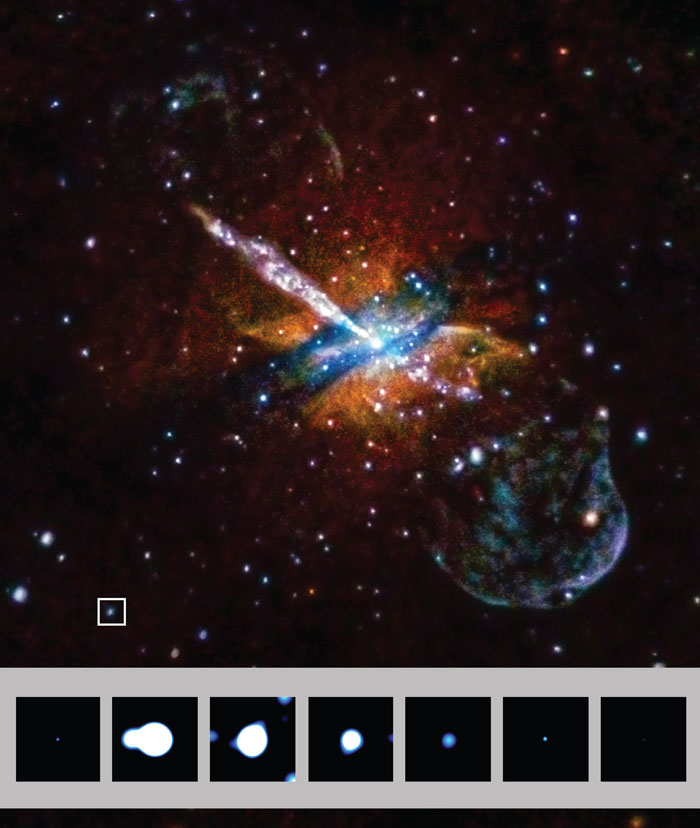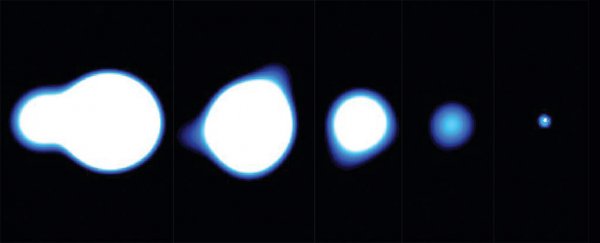Scientists have detected two mysterious objects in space that dramatically flare into a burst of bright X-rays, and they're like nothing we've ever seen before.
These mysterious X-ray sources – which have been observed erupting in two different galaxies – qualify at their peak as what astronomers call ultraluminous X-ray sources (ULXs), but their unusual flaring behaviour doesn't match up with any known cosmic phenomena.
"We've never seen anything like this," says astronomer Jimmy Irwin from the University of Alabama. "Astronomers have seen many different objects that flare up, but these may be examples of an entirely new phenomenon."
Irwin began looking for evidence of unusual X-ray activity after scientists detected extremely bright flaring near a galaxy called NGC 4697. Only two very brief bursts were observed at the time – one in 2003 and one in 2007 – and nobody knew what caused them.
To see if they could find evidence of similar flares, Irwin and his team sifted through archival data covering 70 galaxies collected by NASA's Chandra X-ray Observatory.
After examining several thousand X-ray sources in Chandra's records, the team identified two mysterious flaring objects that might be the same thing as what was detected near NGC 4697.
The first they found, located near the galaxy NGC 4636 – some 47 million light-years away from us – was captured during an outburst in February 2003.
The other object – near the galaxy NGC 5128 at a distance of some 14 million light-years from Earth – was seen to flare five times between 2007 and 2014.
While that makes it sound like these flares happen only rarely, that's not necessarily the case.
As Sarah Scoles at New Scientist reports, given the limited amount of observation time Chandra had to examine each of these galaxies, these kinds of eruptions could actually be taking place much more frequently.
In the case of NGC 5128's repeated bursts, it's even possible that the flaring erupts on average every 1.8 days, bathing the cosmos around it in super-bright X-rays.
"These flares are extraordinary," says one of the team, Peter Maksym from the Harvard-Smithsonian Centre for Astrophysics.
"For a brief period, one of the sources became one of the brightest ULX to ever be seen in an elliptical galaxy."
 Galaxy NGC 5128, with the mysterious flaring object identified in the square. Credits: NASA/CXC/UA/J.Irwin et al.
Galaxy NGC 5128, with the mysterious flaring object identified in the square. Credits: NASA/CXC/UA/J.Irwin et al.
Whatever's causing these outbursts, they don't appear to be disrupting the systems in which the X-ray sources are located.
As far as the astronomers can tell, the flaring originates from otherwise normal binary systems, composed of a black hole or neutron star and a companion star like our Sun.
The most similar kind of flaring activity that scientists know about comes from magnetars – young neutron stars with strong magnetic fields.
But when magnetars flare, they do so very quickly, with the X-rays declining in just seconds after the burst. In contrast, these new objects shine slower, rising to their peak within about a minute, and declining over the space of an hour.
So what's causing this to happen? The astronomers don't know for sure, but it's possible the outbursts are due to matter that's been sucked from a star falling onto a black hole – or potentially onto a neutron star.
In either case, it's a mystery scientists will be eager to solve, especially given the evidence that NGC 4697's outbursts don't seem to have been a fluke.
"Now that we've discovered these flaring objects, observational astronomers and theorists alike are going to be working hard to figure out what's happening," says Gregory Sivakoff from the University of Alberta.
The findings are reported in Nature.
